With the widespread usage of masks, from N95s and respirators to homemade cloth masks, what was formerly esoteric knowledge is becoming more important for everyone to know.
When you’re wearing a mask every day, you want to know how to keep it clean. A dirty mask can be irritating to the skin, it can make it more difficult to breathe through dirty filters, and it can, potentially, harbor remnants of disease. While the average person is unlikely to have to worry about contaminated masks, healthcare and other front-line workers may, so knowing how to disinfect a mask is crucial when disposable masks aren’t available.
How you clean your mask depends a lot on the kind of mask it is. You can wash a cloth mask, for example, but trying to wash a paper mask will destroy it. Let’s talk about different kinds of masks and how to clean, disinfect, and store them.
Disclaimer
Before we get into specific instructions, there are a few disclaimers we should make.
First of all, most masks are not designed with cleaning in mind. Paper masks and surgical masks, for example, are meant to be worn once and discarded. Cleaning them can damage them and reduce their efficacy. Due to global mask shortages, more and more research is being conducted on the most effective ways to decontaminate a mask. Thus, the advice in this article reflects the most up to date information we have available as of the time of this writing, but future research could supersede what we’ve posted below. We’ll do our best to keep this post up to date, but always make sure to check a trusted source like the CDC to be safe.
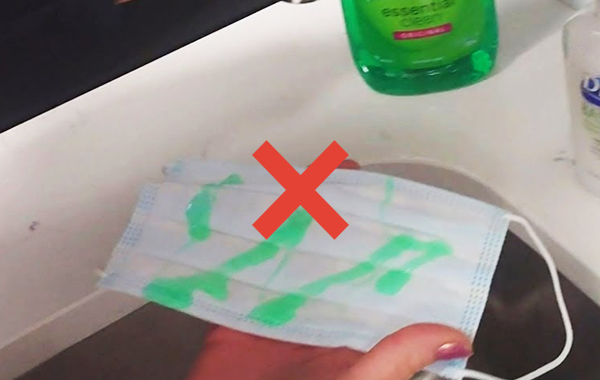
While you may be able to re-use certain disposable mask styles with proper decontamination, they will eventually degrade to the point where they are no longer truly protective. In general, you should avoid re-using disposable masks more than necessary to avoid putting yourself at risk.
Certain methods for decontaminating masks are not readily available at home and can be potentially dangerous if you try to rig them up yourself. Be very careful when working with chemicals, in particular.
Finally, the National Institute of Occupational Safety and Health, or NIOSH, has specific guidelines for healthcare situations where masks can be contaminated and may be reused. Refer to CDC guidelines if you are in a healthcare role. In general, they recommend reusing N95s when necessary for general patient care and patient interactions, but discarding them after aerosol-generating procedures, when contaminated directly with bodily fluids, and in some other situations.
Alright, now let’s dig into specific kinds of masks and how you can clean them.
Air Purifying or Supplying Respirators
A common type of face masks is the full respirator. Air-purifying respirators are the “gas mask” style respirators, typically made of plastic or rubber and providing a full face seal, with removable and replaceable filter canisters or filters. A step above those is the “hazmat” style full-head coverings, like a PAPR, which protect the entire face, seal completely, and supply clean air from an external source.

Cleaning these masks generally comes down to two things: replacing the filters and decontaminating the non-replaceable surfaces. Replacing the filters is generally an easy procedure, though you may need to refer to the instructions for the specific device you’re using. Disposing of a used filter and replacing it with a fresh filter will not only give you cleaner and safer air to breathe, but it will also make it easier to breathe through the mask, as you aren’t restricted by a clogged and dirty filter.
As for decontaminating the surface of the mask, you should again refer to any guidance from the device manufacturer whenever possible. For example, the 3M PAPR device has instructions here. Specifically, they recommend either a 70% or higher concentration of ethyl alcohol or a sodium hypochlorite solution to decontaminate the surface of the mask. Simply clean the surface both inside and out, and let dry to avoid skin irritation.
Generally, these styles of masks are meant to be used indefinitely, with regular changing of filters. Cleaning them is meant to be easy, so disinfecting them with soap and water or alcohol is usually a quick process. Just make sure to be thorough so you don’t miss pockets of potential contamination.
Filtering Facepiece Respirators
FFRs, or filtering facepiece respirators, are also commonly known as air-purifying particular respirators. These are what most people think of when they think of an “N95” mask, though the actual definition of N95 is broader and can contain a wide variety of masks.
FFRs are typically face masks that seal above the nose and below the mouth, but they don’t protect the eyes or other parts of the face. They have tight elastic and a seal around the edge to seal against the skin, to avoid any air working in through the sides of the mask. In fact, this seal is required to get OSHA/NIOSH certification as an N95, alongside the filtration requirements. You can see examples of these from 3M.
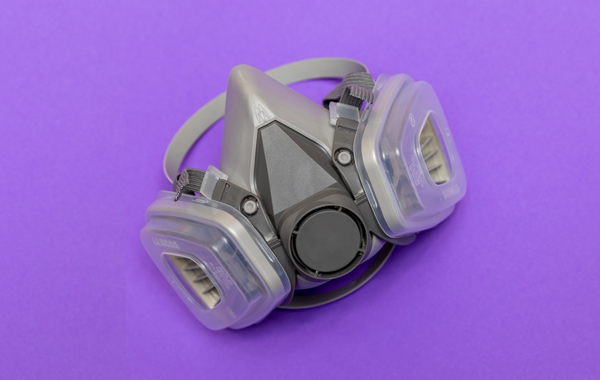
Some of these mask styles have filters that can be removed and replaced, while others have a small filter built-in, which cannot be removed.
If the mask has a replaceable filter, simply replace that filter with an approved cartridge replacement. These may be difficult to find, but it’s necessary to have a supply of them on hand for when filters get clogged since those filters cannot be cleaned. The mask itself will typically be a flexible but sealed material which, like the full respirators above, can be cleaned with soap and water or an alcohol solution.
To sterilize the mask portion of one of these FFRs, you can use soap and water, or you can use ultraviolet radiation, a vaporous hydrogen peroxide sterilization process, and steam sterilization. As mentioned above, the range of different sterilization options are still being tested, and the CDC maintains a document with specifications, test results, and recommendations.
If your FFR is not a variety that can be replaced, unfortunately, there’s no way to effectively clean these masks. Once the filter becomes dirty and clogged with use, there is no way to remove and clean it, so the mask will become unusable.
Cloth Masks with Filters
All of the above kinds of masks are those produced commercially for use in workplaces, healthcare situations, and other potentially hazardous locations. For those of us who don’t have to work in high-risk areas, we can typically get away with N95-rated masks. Cloth masks do not have full face seals, and thus cannot get NIOSH certification, but they are more than adequate for filtering out dust, most airborne particulates, droplets, and other contamination.
Cloth masks run a broad array of designs, from the MyAir style to more hand-made styles with pockets for filters. If you’re shopping for a cloth mask, you should generally avoid masks that don’t have any filters, or where the filters are loosely in place. In order for a filter to be effective, it needs to be clean; using a single filter more than a handful of times reduces how effective it is at filtering air, and makes it harder to breathe through the clogged and dirty filter.
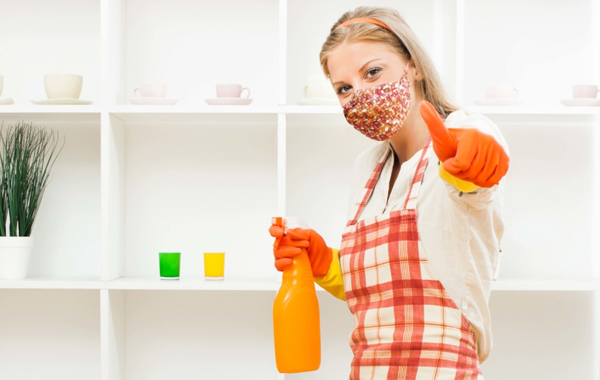
When using this style of mask, try to make sure that it’s snug but comfortable. A mask that is too small will be too tight and will encourage you to wear it improperly, while a mask that is too large will fail to “seal” around the face and will not filter air properly. Air will travel the path of least resistance, and if it can get in around the mask rather than through the filter, it will.
To clean a cloth mask, first, you need to remove any filter it has in it. You can’t wash these filters, so you will need a replacement, whether it’s a flat filter, a repurposed cartridge from an N95, or another style. Always make sure replacement filters are readily available if you want to take advantage of the filter in the first place.
To clean the cloth mask itself, the easiest option is to hand-wash with mild soap and warm water. Soak the mask in soapy water, scrub lightly (while avoiding harsh movements that could damage or tear the mask) and rinse. Once cleaned, lay it flat and let it air dry. Soap and water are enough to remove just about anything that can contaminate a cloth mask, but you do need to make sure to let the mask dry fully before using it again.
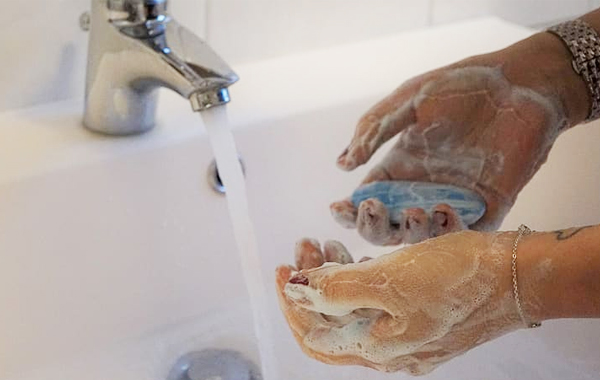
You can also clean and decontaminate a cloth mask in a few other ways.
- Throw it in the washing machine with your other laundry. A washer and dryer cycle can be harsh compared to hand washing, and some mask styles may find their elastic degrading over time and repeated washing.
- Use ultraviolet radiation. UV radiation can be used as a decontamination procedure, though you may have to buy specific, expensive machinery to provide the radiation at the specific frequencies necessary. Simply leaving the mask out in sunlight or using a black light won’t work.
- Microwave generated steam. Commercial microwaves with some moisture involved can generate hot steam that is effective at decontaminating masks after somewhere between 3 and 20 cycles of 40-120 seconds each. Make sure that if your mask has a metal nose-piece, that you remove it prior to microwaving the mask, otherwise you could start a fire or damage your device.
Out of all of the available options, it’s safe to say that hand washing the mask with soapy water is probably the easiest, safest, and fastest way of decontaminating a cloth mask. Other methods require specific machinery or longer cycles of active work to sterilize the mask and aren’t necessary for home and casual use regardless.
Cloth Masks without Filters
Cloth masks without filters tend to be layered cloth and are often home-made today. These masks aren’t filtering, so they don’t actually do much to protect you from airborne particulates below a certain size, microbes, or other contamination. They’re effective at stopping droplet spread, though more as forming a physical barrier between you and the places you would spread contamination.
Essentially, if you’re worried about protecting yourself from hazards in the environment, you need a mask with a filter. If you’re worried about spreading something you may have yourself to others, a cloth mask is suitable. A virus such as COVID-19, specifically, can be spread while you are asymptomatic, which is why the CDC and other health organizations recommend that everyone wears masks when they’re in close contact with other people. Even if you’re not experiencing symptoms, you want to avoid spreading anything you have to others.

On the bright side, a cloth mask without a filter is extremely easy to clean. They can be nothing but cloth, or cloth with elastic sewn in for the ears, and they may have a small metal piece for a nosepiece to help minimize condensation on glasses. You have pretty much every available option, here.
- Hand washing a cloth mask with soap and water is the safest, fastest, and easiest way to clean and decontaminate the mask.
- Using a washing machine allows you to set-and-forget washing a mask, though it’s still best if you air-dry the mask rather than run it through the dryer.
- Washing with a light bleach solution will help kill microbes better than soap, though bleach can damage colors and patterns on the mask if it’s not color-safe bleach.
You can, of course, also use the vaporous hydrogen peroxide, UV radiation, microwave moist heat, or other treatments on a cloth mask, but they’re pretty much overkill. Those treatments are generally used on masks that cannot easily be washed with soap and water. Since a cloth mask can be cleaned easily by hand, there’s no reason to go with something more complex.
Paper Masks
Paper masks, being made of paper, do little more than form a barrier for droplets and large particles. They’re meant for basic protection during surgery and basic infection control and are not meant to be used for more than a few minutes at a time. Unfortunately, due to global mask shortages, sometimes they’re all that’s available.

Using soap and water can destroy a paper mask, so you can’t hand wash it. Instead, you will have to use heat. The moist heat in the microwave option works, but you can also “bake” the mask at 158 degrees F for 30 minutes in a simple home oven. This is enough to destroy infectious diseases but doesn’t do anything for particles like soot or dust that accumulate in the mask. For that, you’re better off buying a washable cloth mask instead, as soon as you can.
Realistically, if you’re looking to clean an everyday face mask properly (and more than once), you should have a cloth face masks. Paper masks are designed to be disposable, so if you’re wearing the same mask every day, it may be time to consider in something that can be properly cleaned.
Do you have any tricks that you use to clean and sanitize your face masks? What has worked for you? Let us know in the comments below!


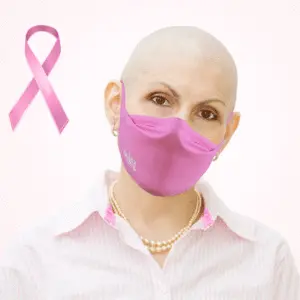

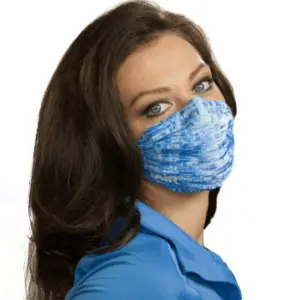

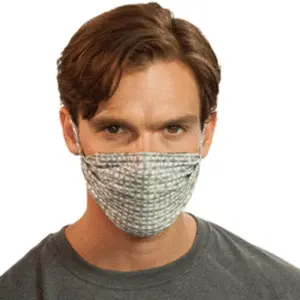






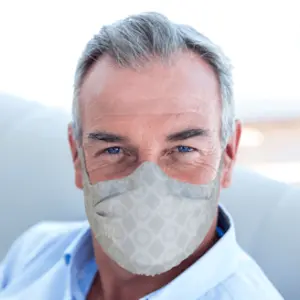





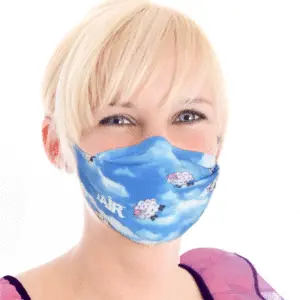
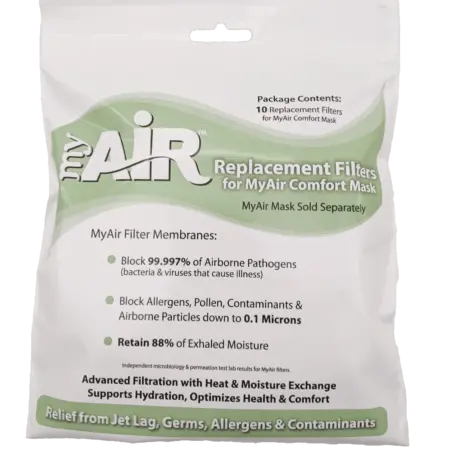
0 Comments